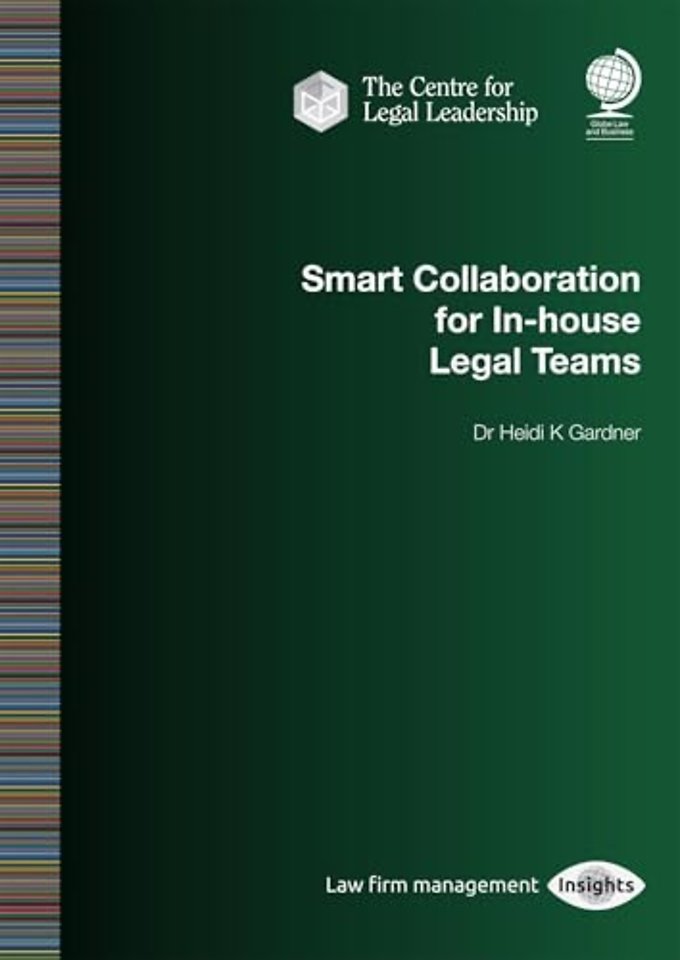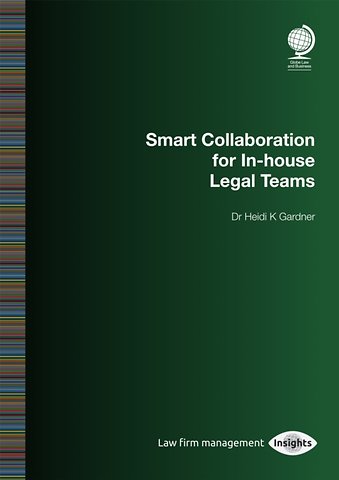Smart Collaboration for In-house Legal Teams
Samenvatting
In-house legal teams are under more pressure than ever to add value to their organisations. This Special Report combines the rigour of Harvard research with a pragmatic focus based on input from hundreds of General Counsels, in-house lawyers, CEOs and board members to show why and how legal teams work across silos – what we call ‘Smart Collaboration.’ It includes the business case, practical tips, case studies and tools to help legal teams master the four essential ‘vectors’ of collaboration:
1. Within legal: The range of experts in in-house legal teams today, all bringing their own jargon, mindsets and approaches, can create potential obstacles to collaboration in an already time-pressured environment. Unleash the full potential of legal and non-legal talent. Rethink hiring and onboarding. Collaborate across countries and cultures. Elevate leadership skills and engineer work to make time for collaboration.
2. With the business: In-house lawyers need to join a business discussion early enough to integrate their knowledge, and earn credibility for their commercial acumen as well as legal expertise. Create more innovative, strategic solutions by partnering with business leaders. Proactively engage with the board and c-suite to deliver value.
3. Across functions: Trying to bridge silos for cross-organisation collaboration can create turf battles unless objectives, resources and credit are all clearly explicated upfront. Integrate with other departments (Finance, R&D, HR, etc.) to create more holistic solutions that capture opportunities, lower risk, and improve the employee and customer experience.
4. Externally: Despite the value that external collaboration can provide, the time and trust needed to find common goals can be in short supply. Co-develop solutions to shape regulatory agendas and inform public discourse. Maximise value with outside counsel and other third-party legal providers.
Vetted by dozens of General Counsel and in-house lawyers, this report will benefit all members of in-house legal teams and those who work with them (eg, executives, heads of other corporate functions, recruiters and consultants). Partners and leaders in law firms will also gain from a deeper understanding of their clients’ operations and aspirations.
Specificaties
Inhoudsopgave
Tables 7
I. Introduction 9
II. The case for collaboration 15
III. Real and perceived obstacles to collaboration 31
IV. Building collaboration within the in-house legal team 43
V. Smart collaboration with business executives 71
VI. Smart collaboration between Legal and other corporate functions 93
VII. Smart collaboration with external stakeholders 115
VIII.Smart collaboration: the ongoing opportunity 133
Notes 140
About the author 144
Anderen die dit boek kochten, kochten ook
Net verschenen
Rubrieken
- aanbestedingsrecht
- aansprakelijkheids- en verzekeringsrecht
- accountancy
- algemeen juridisch
- arbeidsrecht
- bank- en effectenrecht
- bestuursrecht
- bouwrecht
- burgerlijk recht en procesrecht
- europees-internationaal recht
- fiscaal recht
- gezondheidsrecht
- insolventierecht
- intellectuele eigendom en ict-recht
- management
- mens en maatschappij
- milieu- en omgevingsrecht
- notarieel recht
- ondernemingsrecht
- pensioenrecht
- personen- en familierecht
- sociale zekerheidsrecht
- staatsrecht
- strafrecht en criminologie
- vastgoed- en huurrecht
- vreemdelingenrecht








